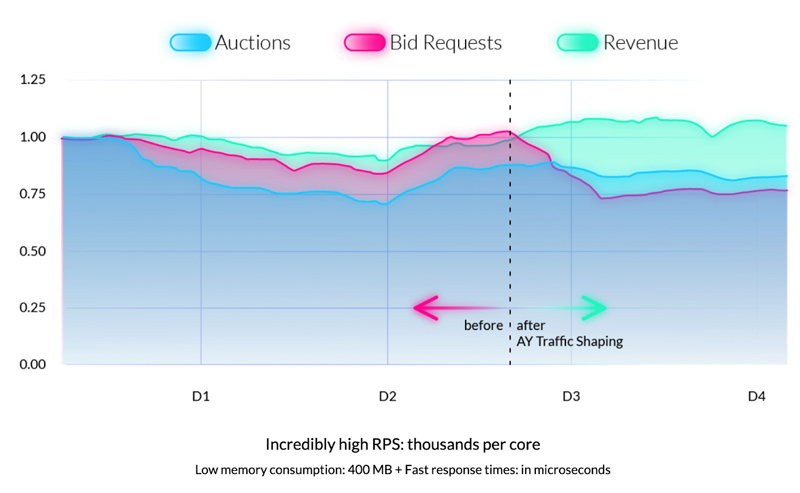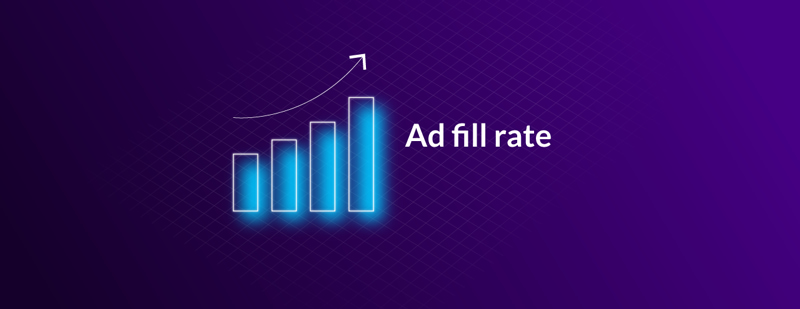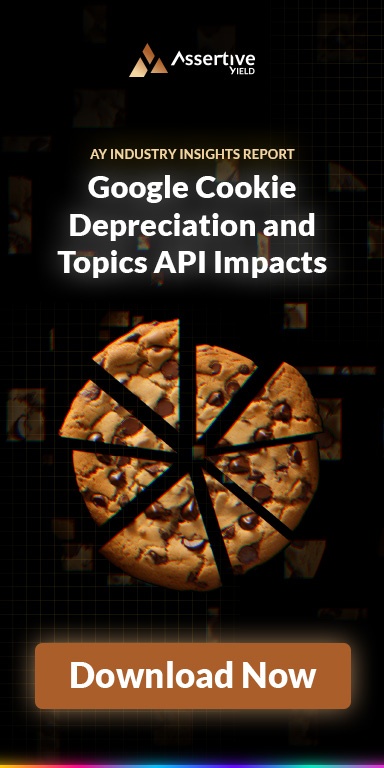4 Ways SSPs Can Overcome Ad Spending Slowdown
SSPs can overcome the ad spending slowdown via adaptation to new market realities, maximizing their ad revenue, streamlining operations, shaping greener traffic, finding new revenue streams, and more

As programmatic advertising continues to evolve, many supply-side platforms (SSPs) are facing a slowdown in ad spending leading to a dip in revenue.
This can be a significant challenge for companies relying on ad revenue, but it's not all doom and gloom.
Ways SSPs Can Overcome Ad Spending Slowdown
This article will discuss how SSPs can overcome the ad spending slowdown via adaptation to new market realities, maximizing their ad revenue, streamlining operations, shaping greener traffic, and finding new revenue streams.
Query-Per Second Optimization (QPS)
As the future of SSPs in the programmatic tech stack remains to be determined, they risk facing a reduction in the number of ad requests they receive, resulting in a decrease in revenue. However, future-proof supply-side platforms use sophisticated machine learning to improve their demand quality and to increase yield from optimal QPS utilization to combat this issue.
QPS optimization controls the number of ad requests submitted to demand partners (such as DSPs) at any given time. By restricting the number of requests, SSPs may ensure that their ad inventory is well utilized and that each request has a greater chance of producing a successful ad impression.
Overall, they can also use QPS optimization to prioritize requests from high-value demand partners and manage ad spend pacing, ensuring their budget is appropriately utilized over a set timespan.
ML- Powered Predictive Audiences
In the end, both DSPs and SSPs desire increased bid request relevancy. For SSPs, this meant restricting bid requests to inventory for which a particular DSP would actually bid. While for DSPs, it meant decreasing the entire bidstream and screening out expensive duplicate bid requests.
DSPs first attempted to address this issue by developing supply path optimization solutions that would assist them in identifying auction bids with a higher likelihood of success. Nonetheless, these solutions occasionally made it challenging for SSPs and their publisher partners to comprehend why and how their bid requests are performing.
However, the predictive audiences method powered by machine learning is fast becoming the more effective approach. This is an automated process in which programmatic auctions are filtered to expose the relevance of each auction through providing and analyzing granular real-time data proficiency.
This method solves the wasted traffic problem by shaping greener traffic that reduces at least 60% of digital waste, reduces traffic cost, fosters better relationships with DSPs, and creates assertive user profiles in real-time, enabled by high-accuracy AY Machine Learning predictions.
IBM's Watson Advertising Predictive Audiences is one of the industry's forerunners.
The AI-powered product for data teams is based on the existing data with more than 13,000 Watson data signals.
As a result, IBM asserts a 44.6% reduction in per-customer costs for predictive audience-built segments.
Another is AY Traffic Shaping. This tool utilizes cutting-edge machine learning and user profiling to accurately identify the most valuable traffic for each DSP in real-time, resulting in about 40% revenue for users and reducing up to 60% wasteful requests. Moreso, customers stated to have seen a 50 - 80% improved revenue per request (link to customer success story) since using the tool.

Go Green or Go Home
SSPs can shape greener traffic at a lower cost by collaborating with programmatic carbon monitoring partners like The Goodnet and Scope3 to track their digital footprint.
By decreasing the cost of acquiring traffic, SSPs can help advertisers free up server networking for increased demand or reduce cloud costs by eliminating bids below operational value, cutting carbon emissions, and eliminating digital waste by as much as 60%, resulting in increased quality traffic and a reduction in traffic costs.
A recent survey demonstrates that 48% of all customers polled in North America believed that reducing carbon emissions from the supply chain would make brands or businesses appear more environmentally friendly to them.
It's no news that most "waste" in the programmatic supply chain originates directly from supply-side platforms.
Therefore, SSPs should invest in a traffic-shaping solution that reduces the number of unqualified impressions, optimizes ad placement, and implements direct programmatic campaigns to enable advertisers to purchase ad inventory and shape greener, lower-cost traffic.
For SSPs to overcome ad spending slowdown, they will need to optimize their integration, sanitize the bid requests they receive from their partners (Publishers), limit the amount of traffic they send to their partner DSPs, and carefully determine the values driven by each bidder (do they add sufficient incremental value to the SSP's system for it to be profitable to submit requests to them?) and minimize revenue loss by meticulous monitoring and waste minimization.
Fortunately, the AY traffic shaping tool (which happens to be the only tool) that can assist with this, and premium SSPs, including Nativo SSP, Amazon, ADX, Outbrain SSP, Taboola SSP, Yahoo SSP, AdSense SSP, and others, have already subscribed.
Discover how GumGum achieved a 30% QPS on average reduction using Traffic Shaping. Read the full story
Fill-Rate Optimization
Fill-rate indicates the proportion of ad impressions served and viewed by users. To maximize ad revenue, SSPs must first optimize the fill rate by investing in a tool that can improve the quality of their traffic by at least 12% resulting in higher overall bid rates and traded volume leading to more revenue and a significant reduction in the server cost.
Remember that executing a direct programmatic campaign is another method for increasing fill-rate.
Programmatic direct campaigns enable advertisers to acquire ad inventory directly from publishers, thereby minimizing the number of intermediaries and raising the fill rate. Moreover, direct programmatic marketing can reduce the cost of traffic acquisition, offering a competitive advantage in the current economic context.
Therefore, SSPs can combat the decline in ad spending by maximizing fill-rate through various techniques, such as deploying direct programmatic campaigns. By maximizing fill-rate, SSPs may ensure that publishers' and advertisers' ad spend is adequately utilized.

Final Thoughts…
Looking at the AY Industry Overview Insights - 2022 Retrospective Report from the previous quarter on how and why Q4'22 witnessed a massive ad spending slowdown in programmatic, SSPs will need to brace themselves for the issues they have on their hands because advertising budgets are the first to be cut off in the market.
On the other hand, SSPs can combat this rapid decline by optimizing query-per-second, investing in real-time prediction models, utilizing traffic shaping technology, going greener and optimizing fill rates. These are effective strategies for SSPs to overcome ad spending slowdown while increasing ad revenue and remaining competitive in the Ad Tech industry.

Shaping a Greener Future: Assertive Yield Releases an In-Depth Look at Green Advertising and Scope 3 Emissions
Read more

What are the top 5 Challenges Programmatic SSPs are Facing in 2024?
Read more

What is QPS Optimization?
Read more




